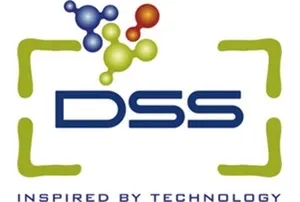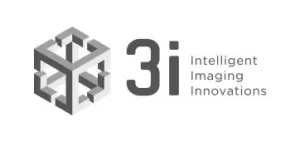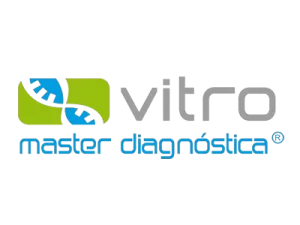DSS: Redefining Biotechnology & Life Science in India
- About Us
- Products & Services
PRODUCTS & SERVICES
- Applications & Specialities
All Applications & Specialities
- Brands
- Contact Us
-

-
 0
0
- ☰
- About Us
- Products & Services
- Applications & Specialities
- Brands
- Brand - Life Sciences
- 3i
- ABBERIOR INSTRUMENTS
- Abbott Molecular
- ADS Biotec
- APPLIED SPECTRAL IMAGING
- BioAir Tecnilabo
- DAKO (AGILENT)
- Eden Tech
- Elveflow
- ENTROGEN
- EUROCLONE
- EVIDENT
- Genea
- Hamamatsu Photonics
- Invivoscribe
- MASTER DIAGNOSTICA
- MBF BIOSCIENCE
- Medical Tek Co. Ltd
- MILESTONE MED SRL
- Molecular Machines & Industries
- MRC HOLLAND
- NeoDx
- Onward Assist
- Profound
- SCIENTIFICA
- SpaceGen
- Seqlo
- µCyte
- Brand - Industrial
- Brand - Life Sciences
- News & Events
- Career
- Contact Us
- Testimonial
- Blogs
- R&D
- CSR

MICROFLUIDICS
BY Muskan Jain August 24, 2022
Microfluidics is a science which studies the behaviour changes of fluids through micro-channels. This type of technology requires microminiaturized devices that contain chambers and tunnels through which fluids flow or are confined. They deal with very small volumes of fluids, μL, nL, pL and fL(femtolitres) so that they can be transported, mixed, separated and visualized easily. In a normal environment, they behave differently on a micrometric scale which makes it important for a research experiment.
BENEFITS OF MICROFLUIDICS–
- It uses less volume of samples, chemicals and reagents thus reducing the cost of application.
- Due to its compact size, many operations can be performed by reducing the time of the experiment.
- Portable devices
- High throughput
- Can do both processes and analyse samples in minimum time.
- It increases the measurement resolution in any applications
TYPES OF MICROFLUIDICS
- Open microfluidics-This is applied to the larger liquid-gas surface area, and to minimize bubble formation. Bubbles are a big challenge in microfluidics, as they interrupt the flow and damage our sample. Disadvantages include evaporation, contamination and limited flow rate.
- Continuous-flow microfluidics-Continuous flow microfluidics allows liquid to flow through narrow channels or porous media with the help of external pressure pumps and integrated micropumps. This approach is easy to implement because it is less sensitive to protein fouling problems. It has a wide range of applications in chemical separation, bioanalytical and environmental fields.
- Digital microfluidics-Also called droplet microfluidics. Most of the application is based on digital microfluidics. Droplets are manipulated in a confined microfluidic channel by using electrowetting. A large range of applications is a synthesis of nanoparticles, single cell analysis, and encapsulation of biological entities. This technology in later years become an important tool for drug delivery and biosensing by providing new solutions for diagnosis and therapeutics.
- Paper-based microfluidics– As it is cheap, portable and user-friendly it is used in various medical diagnosis systems. It is dependent on capillary penetration in porous media. Current applications include glucose detection and environmental testing in remote areas where advanced diagnostic tools are not available.
- Particle detection microfluidics- Used for detecting particle in fluids with the help of electric signals when it passes through saline water. This method is used to count erythrocytes (red blood cells) and leukocytes (white blood cells) for standard blood analysis.
So, there are various branches of microfluidics and its application besides above mentioned. Microfluidic technology is a powerful tool for biologists in studying cell growth, plant tissue culture, antibiotic resistance, cellular ageing, evolution, optics, food science etc. This is not only used by biologists but also used in thermosetting polymers, glass, silicon etc.
FUTURE DIRECTION-
The application of microfluidics is increasing in various sectors one such sector is microfluidics for personalized cancer treatment. The method is based on patients’ diagnosis and background which reduce time and cost with higher throughput. We will also see the role of microfluidics in medical, pharmaceutical technology, drug discovery and many more in near future.
Although microfluidic techniques have a strong potential in various applications there are challenges which interrupt these methods with unreliable equipment, genetic information etc.
Latest Articles
Decoding MRC Holland: What It Is and Why It Matters in Genetic Research
BY DSS Imagetech Pvt Ltd October 15, 2025
In the vast and complex world of our DNA, tiny changes can have monumental consequences. For decades, scientists have sought reliable and efficient ways to read this genetic blueprint, to identify the variations that lead to disease, and to develop diagnostics that can change lives. In this quest, one name...
Read MoreHarnessing Molecular, Cytogenetic and NGS Technologies for Better Outcomes In Light of Childhood Cancer Awareness Month
BY DSS Imagetech Pvt Ltd September 22, 2025
Written by Dr. Hitarth Patel, Application Specialist Every September, the world comes together for Childhood Cancer Awareness Month, represented by the gold ribbon. This month is dedicated to raising awareness, supporting families, and driving research to fight the leading cause of disease-related death among children. While tremendous progress has been...
Read MoreHow Delhi’s Biotech Industry Is Evolving with Cutting-Edge Research Tools
BY DSS Imagetech Pvt Ltd September 22, 2025
In the heart of India’s capital, a quiet revolution promises to change the future of medicine, agriculture, and sustainable living. What was once a landscape dominated by traditional industries is now a vibrant ecosystem of scientists, entrepreneurs, and government initiatives all working together to push the boundaries of biotechnology. Delhi’s...
Read More





























